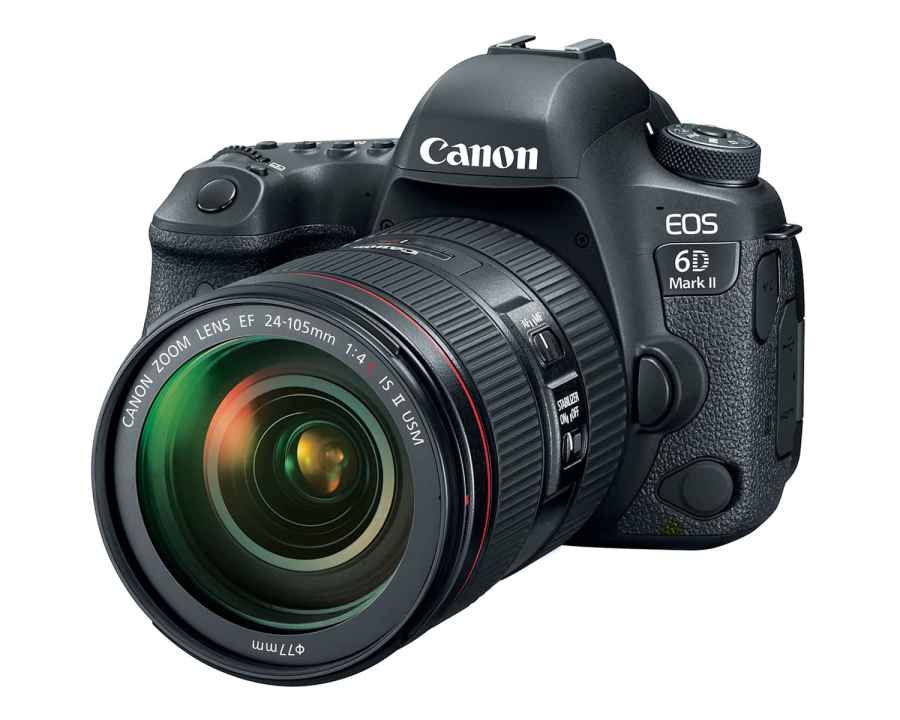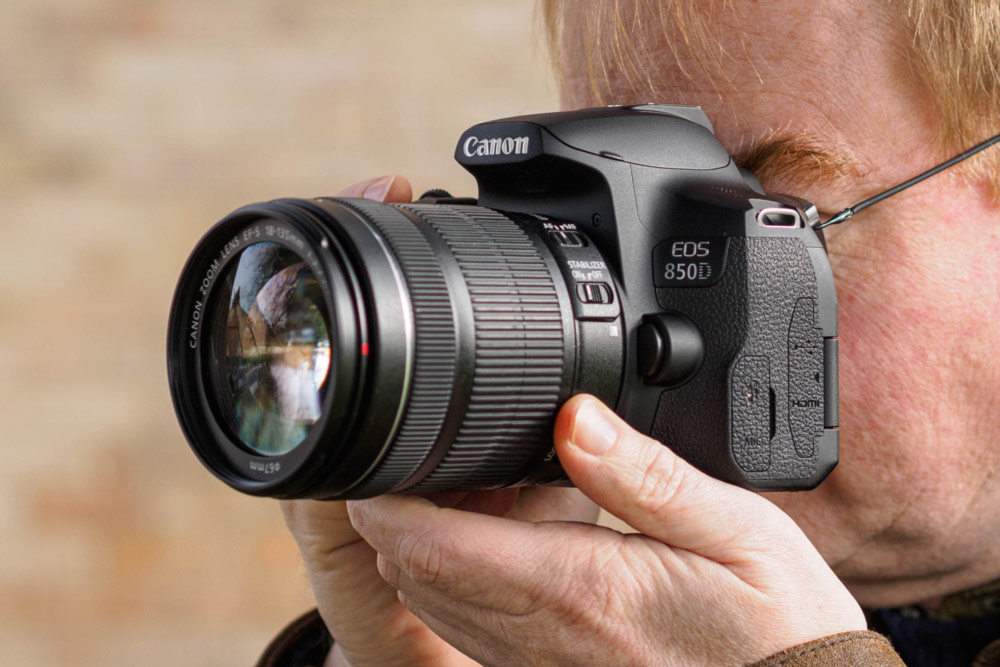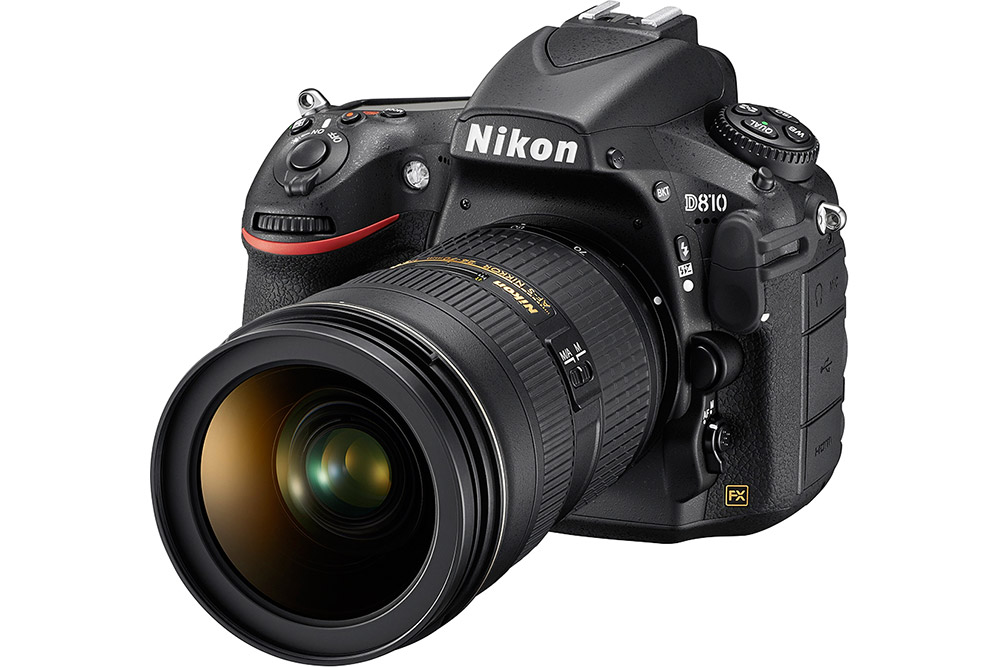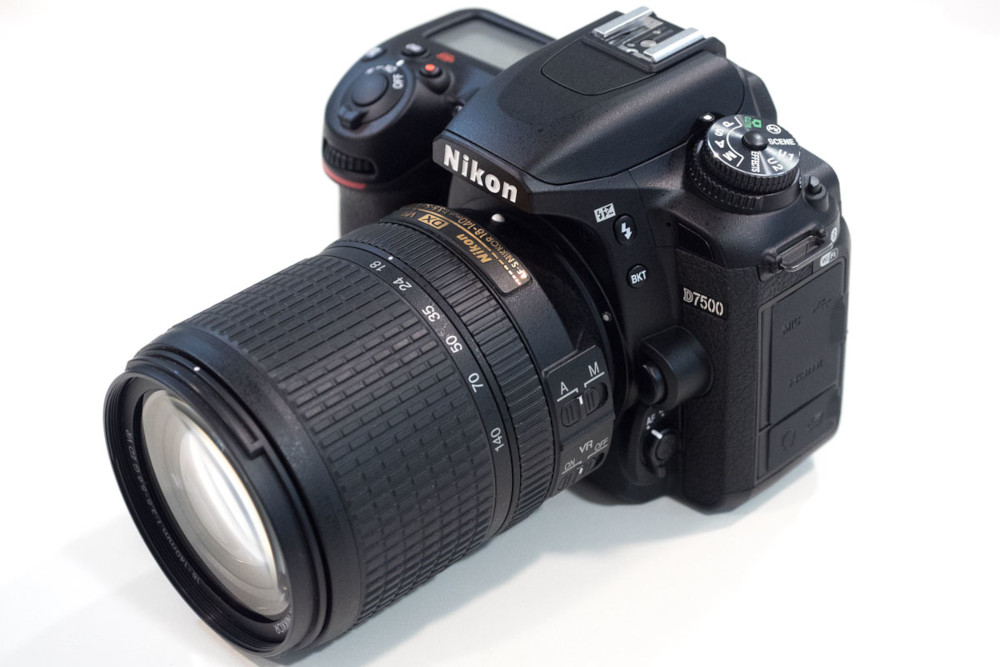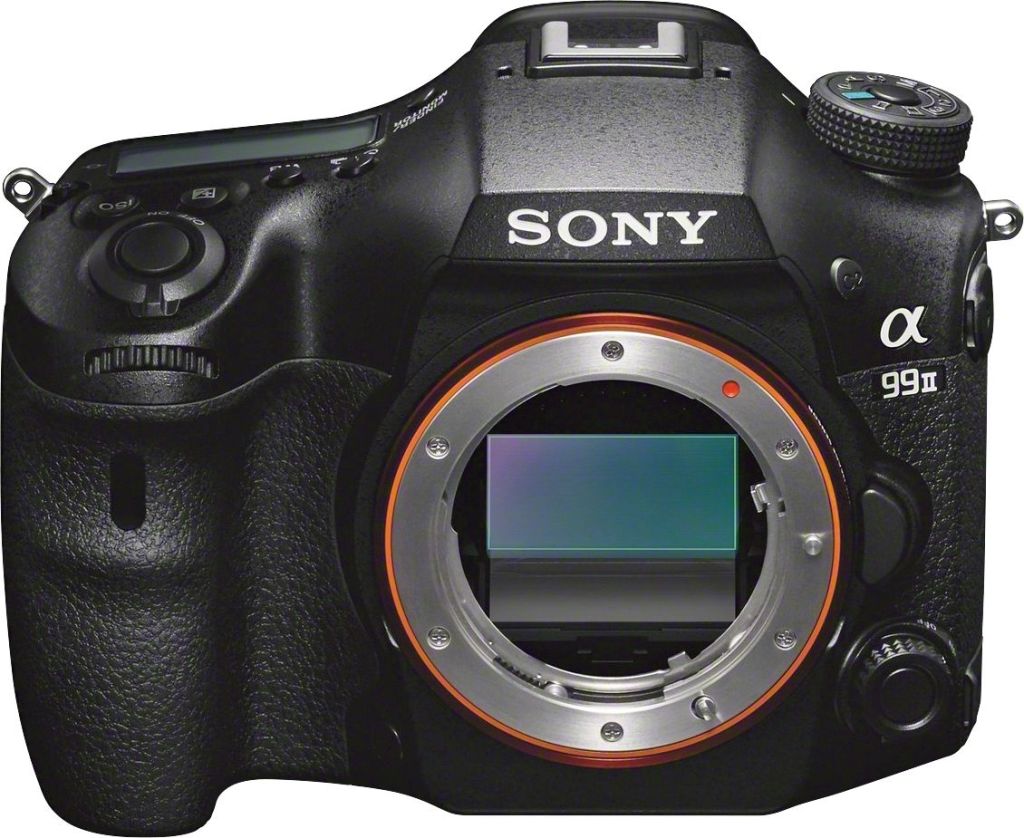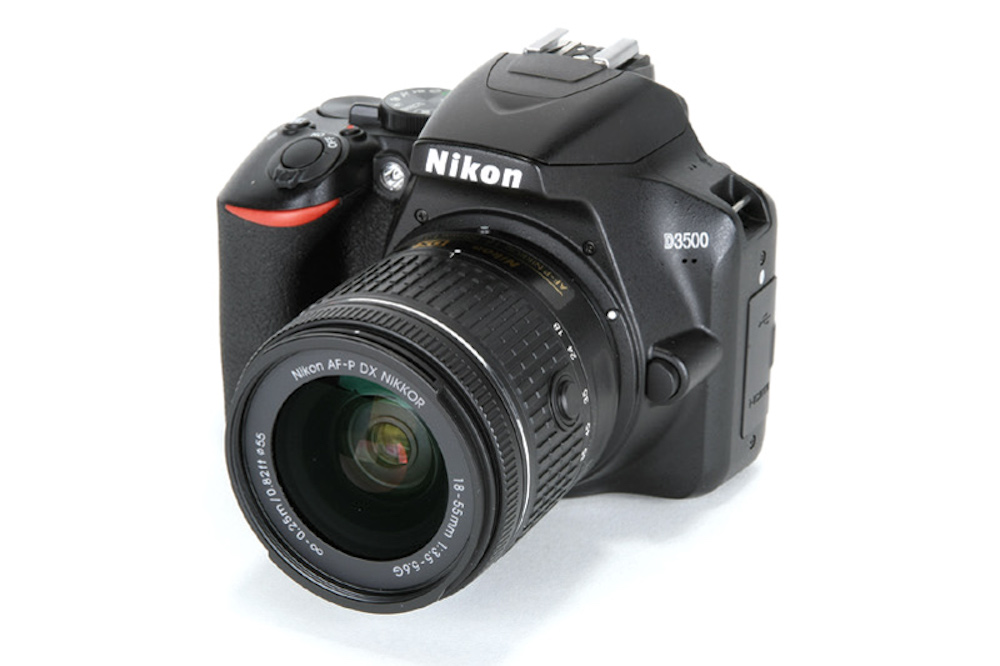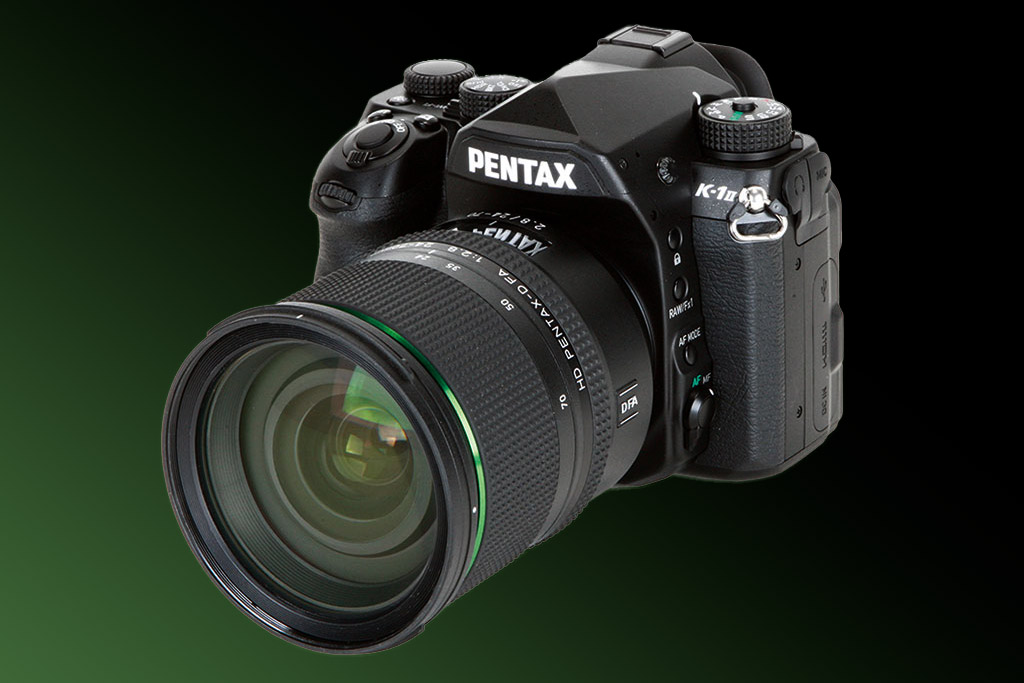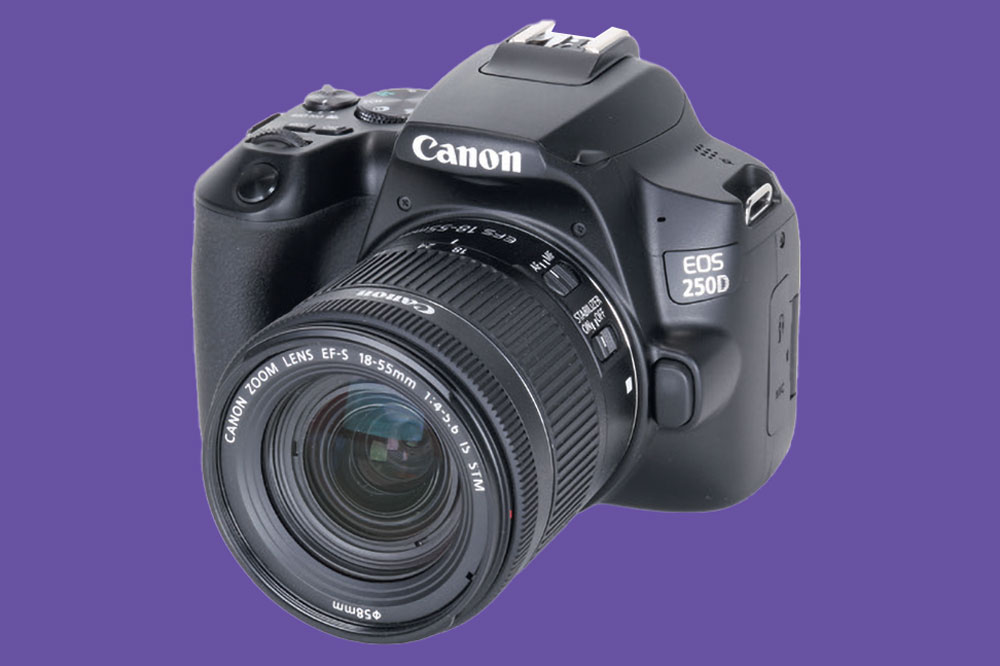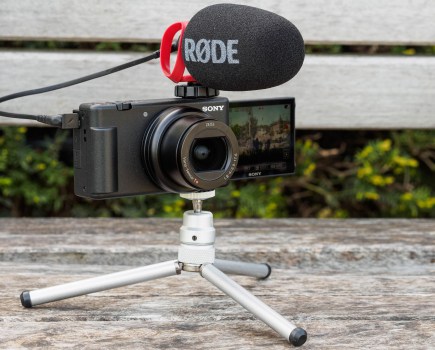We reveal the best value DSLR you can buy right now – read on for some guaranteed best buys that don’t skimp on imaging quality.
In this guide, we’ve assembled all the best-value DSLRs you can buy. Many photographers still love the look and feel of shooting with a DSLR, even in the golden age of mirrorless (i.e. now), and they have plenty of their own advantages that shouldn’t be ignored. What’s more, the increased popularity of mirrorless cameras means that DSLRs don’t tend to command the same prices they once did, particularly on the second-hand market. So if you’re looking to save some cash, you’re in the right place.
For this round-up, we’ve picked out a big selection of DSLRs that can be found for a fantastic price at the moment. These models vary considerably in size and shooting capability – we’ve got semi-pro and professional DSLRs with seriously high-resolutions sensors, and more beginner-friendly options that come with useful guide modes to help novice users learn the ropes. There’s only one criterion a DSLR has to fill to make it onto this list – it has to provide great value for money!
How to choose the best value DSLR
When you’re picking the best value DSLR, it’s important to think about which features are important to you, and plan accordingly. Are you going to want to produce prints of your images? Then resolution is key, as this will let you print in large format and high quality. Alternatively, if you’re more worried about capturing fast-moving subjects, such as wildlife, then sophisticated autofocus and a fast burst rate will be key.
It’s worth thinking about the lens selection too, as the lenses you have available will be a huge part of your imaging setup. Canon and Nikon have the most comprehensive DSLR lens selections, but this is reflected in the price of the cameras. Lastly, are you interested in video as well as stills? We’ve listed the video specs of the cameras on this list if so.
Remember that it’s always worth shopping around as prices will vary, especially if you’re happy to maybe invest in a used camera that’s suffered a few knocks and bumps with its previous owner.
So, without further ado, read on for our essential round-up of the Best Value DSLRs money can buy…
Canon EOS 90D
Price: £1,049 / $1,199 (new, body only)
Canon EOS 90D – at a glance
- 32.5MP APS-C CMOS sensor
- DIGIC 8 image processor
- ISO 100-25,600 (expandable to ISO 51,200)
- 10fps continuous shooting
- Dual Pixel CMOS AF with Eye Detection AF
- Screen: 3-inch, 1040k-dot Vari-angle touchscreen
- Dimensions: 140.7×104.8×76.8mm
- Weight: 701g (including battery and memory card)
The humble EOS 90D may well be one the best-value cameras to have been brought to market. Boasting a high-resolution 32.5MP APS-C sensor (which is actually more resolution than Canon’s 5D Mark IV DSLR), the 90D has all the features you need to create amazing stills and video content.
Packing a DIGIC 8 processor engine, the 90D can fire off up to 11 frames a second, making it ideal for sports and wildlife photography, and this speed is backed up by an advanced autofocus system that features Canon’s acclaimed Dual Pixel AF technology.
Fairly lightweight at 701g, the 90D is also well specced with video features, enabling users to shoot 4K video and goes one better than the 5D Mark IV by offering slow motion at Full HD. Enhanced audio can be both captured and monitored thanks to ports for headphones and an external microphone and shooting video is made easy thanks to the vari-angle touch-sensitive LCD.
For advancing amateurs and keen enthusiasts alike, the Canon EOS 90D is a sound choice. It’s fair to say that the 90D is the arguably the best APS-C enthusiast DSLR Canon has ever made. Photographers who’ve built up a selection of EF lenses, fancy having a more extensive lens lineup available to them, and still prefer using an optical viewfinder as opposed to an EVF, will be very well served by the 90D.
What we like:
- Big resolution
- Vari-angle LCD
- Impressive video features
What we don’t like:
- Only one card slot
- No USB charging
Canon EOS 850D / Canon Rebel T8i
Price: £1,019 / $899 with 18-55mm IS STM lens
Canon EOS 850D – at a glance
- 24.1MP APS-C CMOS sensor
- ISO 100-25,600 (extendable to ISO 51,200)
- Up to 7.5 frames per second (in Live View)
- 4K, 25fps video recording, Full HD 60fps
- 3-inch, 1040k-dot, fully articulated touchscreen
- AF points: 45 (143 in Live View)
- Dimensions: 131.0×102.6×76.2mm
- Weight: 515g (including battery and memory card)
The Canon EOS 850D offers a 24MP APS-C CMOS sensor, with ISO 100 to 51,200 available, and gives you pretty much everything you’ll need from a modern DSLR, with 7.5fps continuous shooting, and 4K 30fps video recording. You’ll also find a fully articulated 3-inch touchscreen on the rear.
A new feature to the 850D is the ability to use face and eye-detection focus when using the optical viewfinder, and this is also available (as expected) during Live View shooting. Wi-Fi and Bluetooth are built-in, and with excellent handling, the camera makes it easy to change settings when needed.
With a comparative dearth of new DSLR models over the past few years, the 850D is an impressively refined and capable camera, and if you’re a ‘glass-half-full’ person, you might conclude that you’re getting the best of both worlds. After all, this is a DSLR that boasts many the best features of a mirrorless camera when it’s switched into Live View.
What we like:
- Small and lightweight for a DSLR
- Lots of external controls
- Comfortable handgrip
What we don’t like:
- Clunky operation when using viewfinder
- Some fiddly buttons
Read our Canon EOS 850D Review
Best value used DSLR: Nikon D810
Price: around £700 / $649 (used) mpb.com / adorama.com
Nikon D810 – at a glance
- 36.3MP FX-format CMOS sensor
- ISO: 64-12,800 (expandable to 32-51,200)
- Up to 5fps continuous shooting (6fps in crop mode)
- Screen: 3.2-inch, 1,229,000-dot fixed TFT-LCD
- Full HD (1920 x 1080) 60p video recording
- AF points: 51
- Dimensions: 146 x 123 x 82 mm
- Weight: 980g
If you’re willing to venture onto the used market then you can find an absolute treasure trove of bargains when it comes to DSLRs. Looking towards the professional and semi-professional cameras from a few years ago is a great way to get yourself a good deal – and arguably provides better value for money for the budget-conscious user than a more modern beginner or mid-range camera.
Case in point – the Nikon D810. With 36.3MP of resolution, this full-frame machine had the most pixels on a sensor of any camera of its type in 2014 when it was released (a record that has of course long since been surpassed), and as such it commanded a premium price of £2,699. These days, however, you can get hold of a Nikon D810 for between £600 and £700 at second-hand retailers like MPB.com. That’s a hell of a saving, and frankly, the D810 is a hell of a camera to get for that kind of money.
Its 51-point autofocus system still impresses today, while the high-resolution sensor with no low-pass filter delivers pin-sharp images that are absolutely full of detail. It’s not the fastest gun in the west when it comes to burst shooting – it wasn’t even that in 2014 – but 5fps isn’t bad for most purposes, and you can bump it up to 6fps by dropping into crop mode.
The D810 was a popular camera among professionals and enthusiasts, so there are lots of them around on the second-hand market. This has helped keep prices relatively low, and it represents some of the best value for money you can get in the DSLR market right now.
What we like:
- Tremendous image quality
- Significant price drop
- Huge stable of F-mount FX lenses
What we don’t like:
- Burst mode not the fastest
- Relatively big and heavy (almost 1kg)
Read our Nikon D810 review.
Best value DSLR for action: Nikon D7500
Price: £1049 / $996 (new, body only)
Nikon D7500 – at a glance
- 20.9MP DX CMOS sensor
- ISO: 100-51,200 (standard); ISO 50-1,640,000 (extended)
- Up to 8 frames per second
- Screen: 3.2-inch, 922,000-dot tilting touchscreen
- 4K (3840×2160) 30p video recording, Full HD 60p
- AF points: 51-point phase detection
- Dimensions: 135.5×104×72.5mm
- Weight: 720g (including battery and memory card)
If sports or wildlife photography are your passions, then a great value-for-money option could be the Nikon D7500. Available new for around £1049 (body only), this impressive Nikon boasts a speedy burst rate of 8 frames per second, thanks to the high-performance EXPEED 5 processor. That’s more than enough to capture almost all split-second moments of wildlife or sports action, especially as the D7500 can maintain this burst for up to 50 NEF (RAW) shots or 100 JPEG images in a single burst.
The good news continues with a decent 20.9-megapixel APS-C sensor and an advanced autofocus system with 51 AF points that will perform particularly well in low light conditions, thanks to a max ISO ceiling of ISO 1,640,000. With a tilting, touch-sensitive LCD, the D7500 is also great for video and can capture 4K movies up to 30p.
The D7500 feels very much like a DX-format version of the D750, with an extremely refined design and well-chosen feature set. It’s possible some prospective buyers might wonder why the pixel count has been lowered compared to the D7200, but 20.9MP is still more than capable of giving enough detail for critically-sharp A3 prints.
The D7500 is a very capable camera that’s likely to satisfy the needs of almost any enthusiast photographer. It’s a solid all-rounder and is a great upgrade for those photographers who are thinking of ‘trading up’ from cameras such as the Nikon D5000-series.
What we like:
- Speedy burst rate
- Big buffer for extended image capture
- 4K video capabilities
What we don’t like:
- Single card slot
- Sluggish AF in live view
Best value Sony DSLR: Sony Alpha 99 II
Price: from £1,579 / $1,999 (used) mpb.com / adorama.com
Sony Alpha 99 II – at a glance
- 42.4MP full-frame CMOS sensor
- ISO: 100-25,600 (standard); ISO 50-102,400 (extended)
- Up to 12 frames per second
- Screen: 3-inch, 1,228,800-dot TFT adjustable angle monitor
- 4K (3840×2160) 25p video recording, Full HD 100p
- AF points: 399-point hybrid phase detection AF
- Viewfinder: 0.78x magnification; 100% coverage
- Dimensions: 142.6×104.2×76.1mm
- Weight: 849g (including battery and memory card)
OK, so this is a bit of a curveball because the A99 II is not only hard pretty to find on sale these days, but it is also not truly speaking a DSLR camera. In fact, it’s a ‘DSLT’ thanks to its fixed translucent mirror but, despite being launched way back in autumn 2016, the Sony offers an incredible specification for an ever-decreasing investment.
Let’s start with the sensor, which is a full-frame chip that serves up a whopping 42-megapixels of resolution and features no Anti Aliasing filter to get sharper detail in your frames. A speed demon, the a99 II can capture 12 frames per second – an amazing rate for such a high-resolution camera. Focusing is taken care of by no less than 399 AF points – 79 of which are the more sensitive cross type points.
The camera benefits from a 5-axis In-Body Image Stabilisation system to keep shots steady and images can be lined up via a 3-inch LCD that offers a vari-angle design. Capable of shooting 4K video and packing ports for headphones and an external mic, the a99 II is certainly fully loaded and there are still plenty of options for lenses via the A-mount lens fitment. Though, of course, there are unlikely to be any new ones, with Sony’s A-mount department unofficially but firmly shuttered.
What we like:
- Big resolution
- Image stabilisation
- Fast burst rate
What we don’t like:
- A-mount is a dead end
Read more about the Sony Alpha 99 II
Best value DSLR for full frame: Canon EOS 6D Mark II
Price: from £839 / $1,118 (good condition, used)

Canon EOS 6D Mark II – at a glance
- 26.2MP full-frame CMOS sensor
- DIGIC 7 image processor
- ISO 100-40,000 (expandable to ISO 102,400)
- 6.5fps continuous shooting
- Video: Full HD (1920×1080) video & 4K time-lapse movie
- Screen: 3-inch, 1040k-dot Vari-angle touchscreen
- Dimensions: 144×110.4×74.8mm
- Weight: 765g
For those looking to step up to full-frame photography, the 6D Mark II represents a great value-for-money option thanks to a 26-megapixel sensor that’s capable of delivering professional-quality imagery. Still relatively new, having been launched in 2017, the 6D Mark II is an all-rounder, offering a decent burst rate of 6.5 frames per second. It has a competent autofocus system with Dual Pixel AF, plus no less than 45 cross-type AF points, and a wide ISO range that’s expandable right up to 102,400.
Built-in GPS tags the locations where you capture images in case you’d like to return of share this data and a vari-angle touch-sensitive LCD helps photographers line up awkward high and low compositions or set up video scenes that can be recorded in Full HD, although 4K time-lapse movies can be created too.
The EOS 6D Mark II is a stepping stone for existing Canon users to get into full-frame photography and is a viable alternative to the more advanced EOS 5D Mark IV. Those thinking about a move away from a Canon APS-C DSLR will need to factor in that it isn’t just the body that will cost – the extra expense of upgrading a few EF-S lenses could well see the final price rise.
As a versatile all-rounder, it puts in a respectable performance. Its snappy AF speed in Live View, sensational vari-angle touchscreen and wireless connectivity options are likely to gain interest from older EOS 5D-series users who fancy an up-to-date body, or perhaps a back-up body, in a smaller form factor. When size and weight are critical– when you’re travelling, for example – the EOS 6D Mark II really comes into its own.
What we like:
- Affordable price
- Weather sealing
- High ISO range
What we don’t like:
- No 4K
- Tightly grouped AF points
Read our Canon EOS 6D Mark II Review
Best value DSLR for beginners: Nikon D3500
Price: £449 / $649 (with 18-55mm lens)
Nikon D3500 – at a glance
- 24.2MP APS-C CMOS sensor
- ISO: 100-25,600
- Up to 5 frames per second continuous shooting
- Screen: 3-inch, 921k-dot fixed TFT LCD
- Full HD (1920×1080) at 60p, HD (1080×720)
- AF points: 11-point system
- Dimensions: 124×97×69.5mm
- Weight: 415g (including battery and memory card)
When it comes to the more entry-level DSLR market, it’s pretty hard to beat the Nikon D3500 for value. Still relatively new from its 2018 launch, the APS-C sensor Nikon offers 24-megapixels of resolution and the camera is a great all-rounder suitable for carrying around all day, thanks to a battery that offers up to 1500 shots on a single charge and a lightweight of 415g (with battery and memory card).
For just a few hundred pounds, photographers can access a DSLR that offers a burst rate of five frames per second, features 11 AF points, a respectable ISO range of ISO 100-25,600 and the benefits of Nikon’s speedy EXPEED 4 processor unit. Along with the stills features, the D3500 can capture Full HD video at 60p, which means the footage can be used at half-speed to create a slow motion effect.
Particularly useful for newcomers to photography is the D3500’s Guide Mode, which will explain various modes with information displayed on the 3-inch rear LCD screen. The Special Effects modes will enable users to get creative in-camera to capture stylised images including the miniature effect and toy camera effect without the need of a computer.
Available for around £449 with the 18-55mm AF-P VR lens, or £399 with the non-VR 18-55mm AF-P lens, the D3500 is keenly priced and is excellent value for money. If you can live without the slightly larger vari-angle touchscreen and more advanced 39-point autofocus system offered by the D5600, then the D3500 is undoubtedly an excellent choice for the first-time DSLR buyer. In all, it’s a reliable little camera that we have absolutely no hesitation in recommending to beginners.
What we like:
- Low price tag
- Decent resolution
- Full HD video capability
What we don’t like:
- Fairly basic AF system
- Fixed touchscreen
Read our Nikon D3500 DSLR Review
Best value DSLR for image quality: Canon EOS 5DS
Price: from £1109 / $999 (well used)

Canon EOS 5DS – at a glance
- 50.6MP full-frame CMOS sensor
- Dual DIGIC 6 image processors
- ISO 100-6400 (standard); 50-12,800 (extended)
- 5fps continuous shooting
- Video: Full HD (1920×1080) video at 30p
- Screen: 3.2-inch, 1040k-dot Clear View II TFT
- Dimensions: 152×116.4×76.4mm
- Weight: 845g
Okay, so the 5DS is a little long in the tooth having been launched back in the spring of 2015, but it remains, to this day and probably forever, the highest resolution DSLR money can buy, along with its sister camera the 5DS R. Being able to buy a DSLR that offers 51-megapixels of resolution from the full-frame CMOS sensor for under £1500 is, quite frankly, mind-blowing value-for-money.
The EOS 5DS will appeal to landscape, wedding, commercial and fashion photographers, who wish to make big prints of their images or have the tolerance to crop in on files without compromising image quality. Although primarily a stills camera, the 5DS does shoot Full HD and offers a burst rate of 5 frames per second, which is impressive given the huge amount of data the camera is capturing.
In fact, the 5DS serves up a maximum files size of 8688×5792 pixels and features dual storage slots (one CompactFlash and one SD card). Backed up by a sophisticated 61-point autofocus system, the 5DS features professional weather sealing and also allows 19MP images to be captured in APS-C mode to gain the user some focal length.
The 5DS is very easy to use, handles well, is designed to be comfortable and the button layout is sensible, allowing you to take care of everything you need quite easily. The only ‘disadvantage’ in comparison to other cameras is that the 5DS is fairly heavy (at 845g), but it’s a workhorse camera that’s incredibly durable and able to withstand challenging conditions. Photographers can be safe in the knowledge that this camera will perform day in and day out.
In terms of body design, the 5DS is more or less identical to the Canon EOS 5D Mark III. It’s a tried-and-tested formula that has been tweaked through every generation of Canon full-frame DSLRs. If you’ve ever owned a 5D-series model or even a 6D, then you will feel right at home when you pick up a Canon 5DS. Canon has one of the best layout and menu systems available. The colour-coded menus are easy to navigate and all the most-used buttons that photographers need are right where you need them.
What we like:
- Unrivalled resolution
- Weather sealing
- Dual card slots
What we don’t like:
- Limited native ISO range
- Massive file sizes
Pentax’s best value DSLR: Pentax K-1 Mark II
Price: £1,699 / $1,796
Pentax K-1 Mark II – at a glance
- 36.4MP full-frame sensor
- PRIME IV image processor
- ISO 100-819,200
- 6.4fps continuous shooting (APS-C size); 4.4fps full-frame
- Autofocus: 33-point SAFOX 12 system (25 cross-type points in centre)
- Video: Full HD (1920×1080) video at 60i, 50i, 30p, 25p, 24p
- Screen: 3.2-inch, 1037k-dot flexible tilt TFT
- Dimensions: 136.5×110×85.5mm
- Weight: 1010g (with battery and card)
Now, the flagship Pentax K-1 Mark II does creep a little above our £1600 price point, but used versions of this rugged and robust camera can be purchased for well below that price and there’s no doubt the Pentax is a name worth thinking about when picking the best value DSLR. Packing a full-frame 36-megapixel sensor within the extensively weather-sealed magnesium alloy body, the K-1 Mark II is one of the few DSLRs to include a 5-axis In Body Stabilisation system, which will help to keep shots sharp, particularly in low light.
One of the K-1 Mark II’s most intriguing features is Pixel Shift Resolution System II, an upgrade from the original system which now has a new mode which can be used when shooting handheld. The Dynamic Pixel Shift Resolution mode can be used in conjunction with the camera’s shake-reduction mechanism to help to create high-resolution shots without evidence of camera shake.
Another key feature in the Mark II version of the K-1 is a newly incorporated accelerator unit, which has been designed to help when shooting in low-light to produce images with low levels of noise and high detail. ISO sensitivity has also now been increased to ISO 819,200, with the promise of improved noise reduction even at such high levels. Though it must be said, the images at these high levels are simply not in any way useable, as we discovered in testing. It’s more a novelty than a serious shooting option.
Other features continued from the original K-1 include a flexible tilt-type LCD monitor, a SAFOX 12 autofocusing system with 33 sensor points (including 25 cross-type), an optical viewfinder offering 100% field of view, a weatherproof and dust-proof body, dual SD card slots, Full HD video recording and a built-in GPS module. Photographers can make instant back-ups via the dual SD card slots and images can be composed using the unique LCD, which benefits from a clever stilts design that enables users to reposition the screen to help line up images.
As a bonus, the K-1 Mark II is also a wise selection for astrophotographers looking for a bargain as the Pentax features an ‘Astrotracer’ feature, which is probably best described as an in-camera star tracker that will help you capture amazing images of the night sky.
What we like:
- Rugged build-quality
- Big resolution sensor
- Image Stabilisation
What we don’t like:
- High ISOs are unusable
Discover more about the Pentax K-1 Mark II
Best Value DSLR: Canon EOS 250D / Rebel SL3
Price: £500 / $649
Canon EOS 250D – at a glance
- 24.1MP APS-C CMOS sensor
- DIGIC 8 image processor
- ISO 100-25,600; 51,200 (expanded)
- 4K video at 24/25fps
- 9-point AF (3,975-point AF in Live View)
- Screen: 3-inch, 1040K-dot vari-angle touchscreen LCD
- Viewfinder: 0.87x magnification; 95% coverage
- Dimensions: 122 x 93 x 70mm
- 449g (body with battery)
If you like the idea of a small and light camera, but still want to keep the mirror, the Canon EOS 250D could well be for you. Officially the smallest and lightest DSLR money can buy, the diminutive Canon also represents good value for money thanks to a beefy 24-megapixel APS-C sensor (that will easily deliver images capable of being printed to A3 in size) and Canon’s high-performance DIGIC processor. The EOS 250D strikes a great balance between portability and usability… it’s the smallest and lightest DSLR with a multi-angle screen; weighing just 449grams (with battery) and measuring 122x93x70mm.
The EOS 250D’s Dual Pixel AF system offers 3,975 user-selectable focus points across the whole screen when shooting in Live View mode – a very impressive feature on a budget DSLR. The camera offers 4K video recording and its DIGIC 8 processor supports a range of improvements in Live View AF, along with Eye AF, an Auto Lighting Optimizer, a Digital Lens Optimizer and Highlight Tone Priority.
It’s equipped with a novice-friendly Guided Mode and image quality is very good, delivering vibrant colours and plenty of fine detail. The vari-angle touchscreen makes composing, focusing and shooting very straightforward, or you can shoot via a traditional optical viewfinder, with its more basic 9-point AF. Other notable features include in-camera editing for both JPEG and RAW files, along with Canon’s well-implemented Bluetooth 3 and Wi-Fi connectivity for pairing the camera with smartphones (via the Canon Camera Connect app), which lets you to share images and control the camera remotely.
Entry-level DSLRs face fierce competition from compact mirrorless models these days, but the EOS 250D remains a fantastic little camera. It’s a great choice for aspiring vloggers – especially as the tiny Canon can shoot movies in 4K quality. With plenty of EF/EF-S lenses to choose from, the 250D gives all the benefits of a DSLR in the size of a mirrorless body.
What we like:
- Tiny dimensions
- 4K video
- Vari-angle LCD
What we don’t like:
- Generally pricier than Nikon D3500
Read our Canon EOS 250D / Rebel SL3 review.
Further reading:
What are the best DLSRs you can buy right now
The best cameras for beginners 2022

